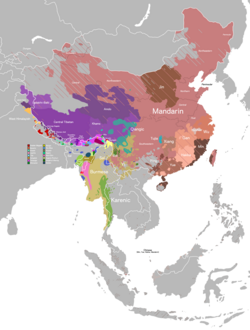| Nyishi (Kamle) | |
|---|---|
| Sarak | |
| Region | Arunachal Pradesh |
| Ethnicity | Nyishi (Kamle) people |
Native speakers | 10,000 (2008) [1] |
| Language codes | |
| ISO 639-3 | None (mis)Individual code: mrg – (included under Plains Miri) |
| Glottolog | hill1258 |
| ELP | Hill Miri |
 Hill Miri is classified as Definitely Endangered by the UNESCO Atlas of the World's Languages in Danger . | |

Nyishi (Kamle) or Sarak is a Tani language of India. It is spoken in Arunachal Pradesh by an estimated 9,000 people of the Nyishi tribe. [2] It appears to be a dialect of the Nishi language. [3]
Contents
- Description
- History of scholarship
- Phonology
- Consonants
- Grammar
- Numerals
- Pronouns
- References
- Further reading
- External links
Though Hili Miri is listed under Mising [mrg] in Ethnologue , Burling and Sun–experts on the Aranuchal Pradesh and Tani languages–treat Hill Miri and Mising as separate and distinct languages belonging to different branches of the Tani subgroup. [1]
